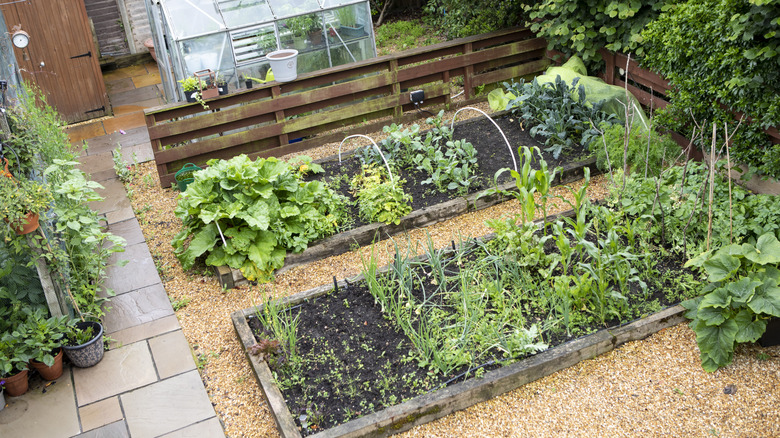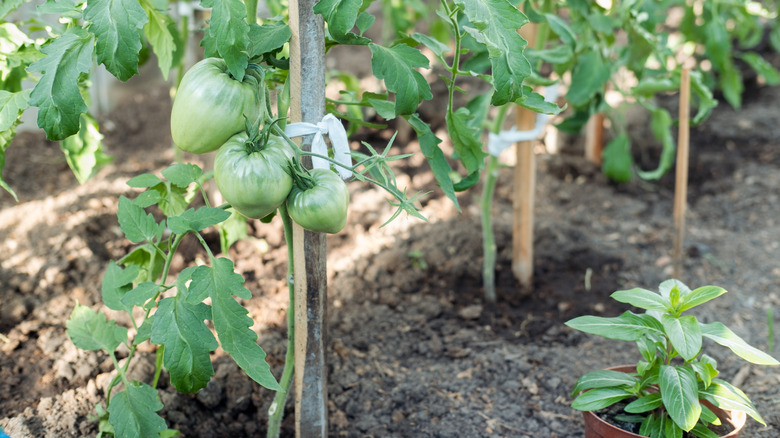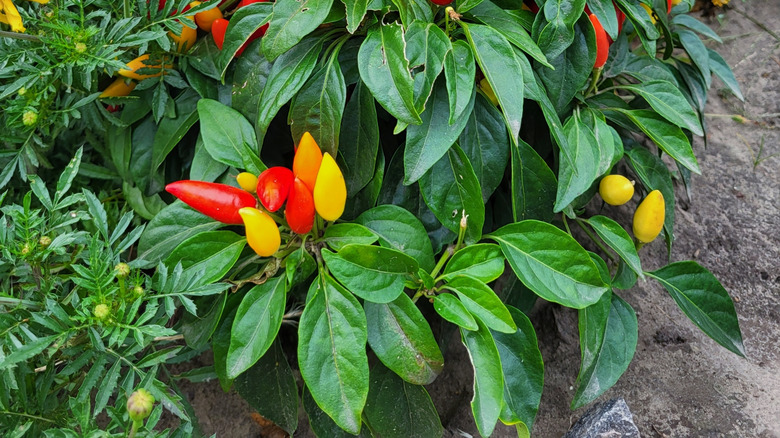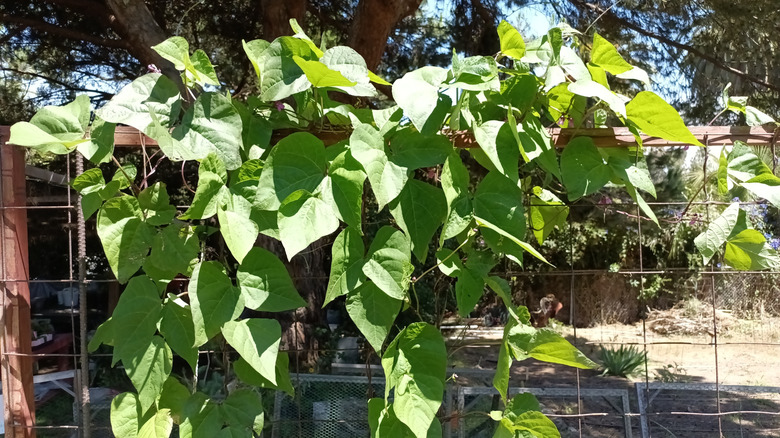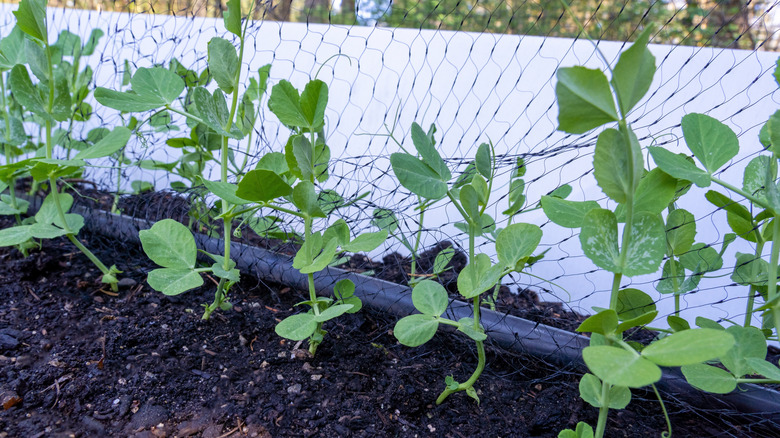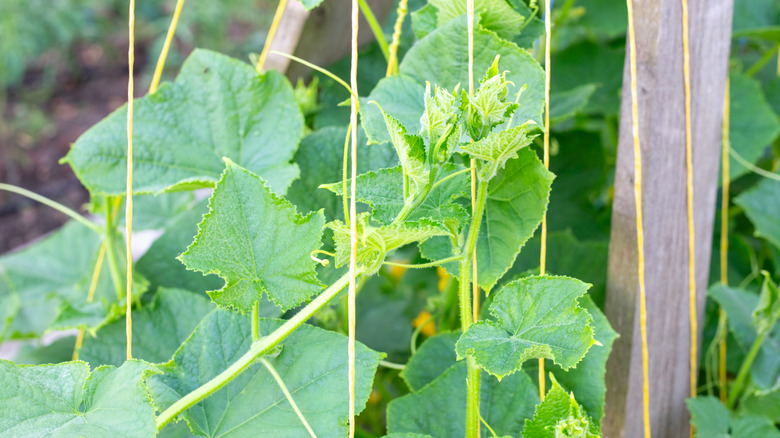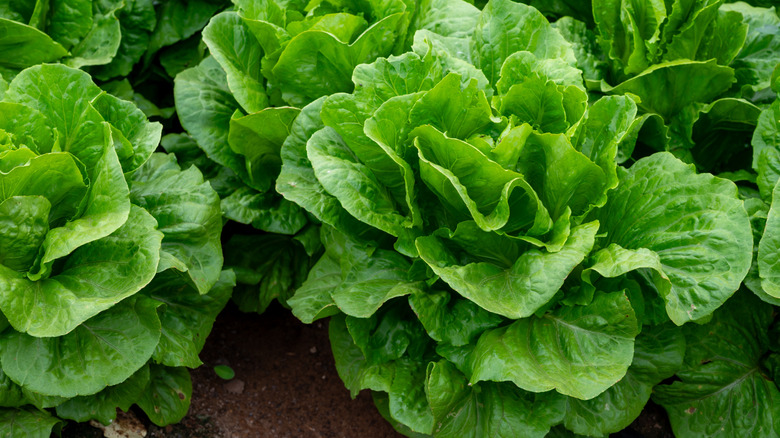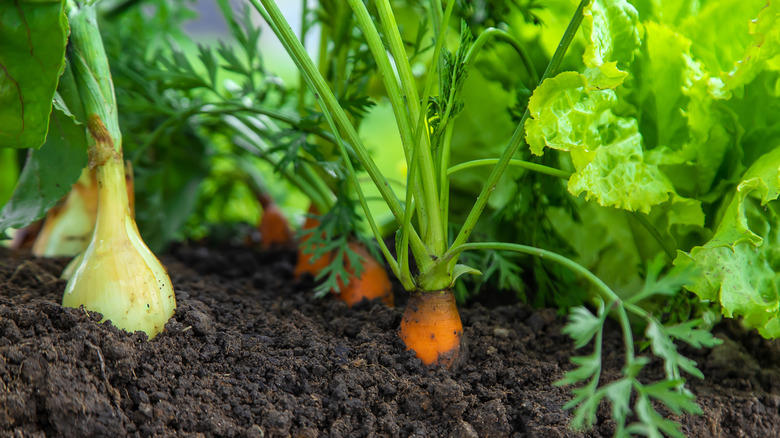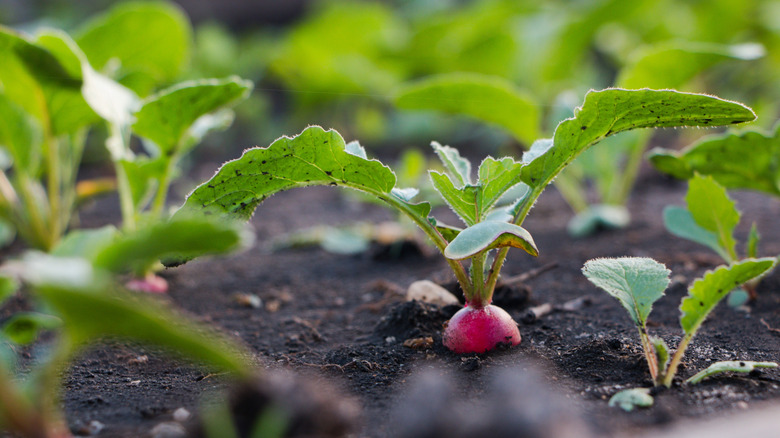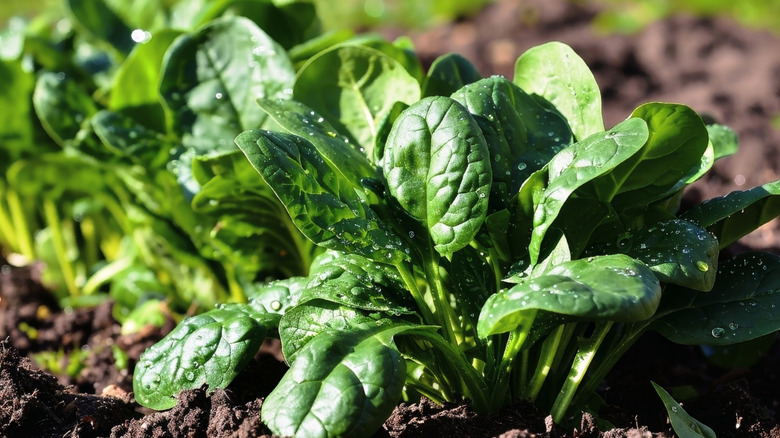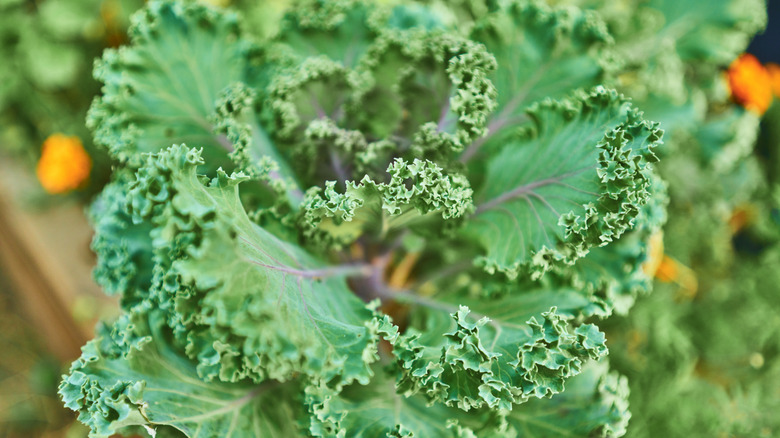Make Your Small Row Garden A Bountiful Paradise With These 10 Plants
Even if you have limited space, you can still grow a bountiful paradise of edible plants by choosing varieties that grow well together and don't take up that much room. In fact, you'll find that many different edible plants can be grown quite closely in a small row garden and this has plenty of advantages as well. A narrow garden makes tending your plants so much easier because you'll have good access to all the plants you're growing. You can increase the growing space even further by putting in trellises so that some of the plants you intend to grow can use the vertical space to its full advantage. Once these take off, you can plant lower growing species around the base and really make use of that small space.
A wise choice is to select more compact varieties of the plants you want to grow so that you can fit in as many as possible to completely fill the growing space you have available. For all of this to work successfully, you just want to ensure that your soil is rich and fertile, and contains plenty of compost. You also need to be vigilant with your watering schedule to ensure all your crops get sufficient moisture. Plus, regular feeding is important in a small row garden to ensure there are enough nutrients available for all the plants to grow and produce their delicious harvest. Good varieties to grow in your small row garden include tomatoes, cucumbers, peppers, lettuce, and carrots.
Tomatoes
For a small row garden, you're better off sticking with compact or patio determinate tomato varieties because indeterminate ones would take a lot of time and effort to train and tame into a small space. Cherry tomatoes are probably the best choice because they'll give you a bountiful harvest. As determinate tomatoes will fruit and ripen all at once, you might want to consider replacing the plant with a new one once you've harvested all the fruit on the original. This should allow you to extend your harvest right up until the end of the season.
Peppers
You'll find a large selection of pepper varieties that you can add to your small space. Whether you prefer sweet or hot peppers, these plants will grow happily among your other edibles and provide you with a constant supply of fruits throughout the season. For a sweet variety, you might like to try lunchbox peppers, or if you prefer more heat, consider growing ornamental peppers, which are edible and colorful but don't grow too big. Companion plants that will thrive next to your peppers include carrots, onions, garlic, and radishes.
Beans
With beans, you have the choice of either growing bush beans which are relatively compact, or pole beans which you can grow vertically once you have a sturdy trellis installed. Although bush beans are fairly good croppers, you'll find that you'll get an even more bountiful harvest, if you decide to grow pole or runner beans. it's the perfect way to utilize the space you have while getting a lot of fresh produce. Make sure you pick your beans regularly, as this will encourage them to keep producing more.
Peas
Peas have a similar growth habit to pole or runner beans in that they'll happily grow upwards if you provide them with a trellis for support. By harvesting the pods continuously, you'll end up with quite a bumper crop in just a small space. You can then use the soil beneath the peas to grow leafy greens such as lettuce, spinach, and Swiss chard. The advantage of doing this is that peas will add nitrogen to the soil which the greens will happily use to produce more lush growth.
Cucumbers
The absolute best way to grow cucumbers in a small garden space, is to grow them vertically up a sturdy trellis. This keeps the fruits off the ground and leaves the space below available for growing other crops such as carrots and radishes, or even leafy greens. As cucumbers aren't always natural climbers, you might need to assist them to begin with, by guiding them upwards and tying them gently onto the trellis as they grow. Remember to give them plenty of water and fertilizer as they're quite thirsty and hungry plants.
Lettuce
You can grow a range of different lettuce varieties in your small row garden as they don't take up very much space at all, especially if you choose the loose leaf types. These are ideal for growing around the base of your trellised plants and will give you a constant harvest because you can just cut a few leaves as you need them. They're also perfect for succession planting to fill in empty spaces as soon as they become available. This is the perfect way to utilize your garden area to its full potential.
Carrots
Carrots are another one of those vegetables that you can easily fit in between and around other crops as long as there's enough room for their roots to grow downward. These are best grown from seed sown straight into your small row garden or you can start them by planting the seeds into toilet paper rolls filled with potting soil or seed-raising mix. The benefits of growing carrots in toilet paper tubes are that the tubes are long enough for the roots to develop and then you can plant them straight into the garden without disturbing them.
Radishes
It's common for radishes and carrots to be sown at the same time to occupy a small space. This is because radishes grow really quickly and are ready to harvest well before the carrots have had a chance to develop fully. This makes radishes another good crop for filling in empty spaces around your small row garden. They can be harvested as soon as three weeks from planting which means you can get multiple crops of these while you're waiting for your other vegetables to be ready for harvest. Remember that the leaves and seed pods are edible too.
Spinach
Spinach can be a bit finicky to grow because, unless you get the timing right, the plants will bolt before you have a chance to harvest them. Seeds need cool soil to germinate which means they'll do well if you put them into spots that are shaded by taller growing crops like tomatoes, beans, and peas. This will also give the plants some protection from the sun and hopefully, stop them from bolting and going to seed. Essentially, you want to start seeds in early spring and then again in fall to achieve the best success.
Kale
Growing kale in your small row garden will allow you to extend your growing season, depending on where you live, because this vegetable is generally a cool season crop. It can be planted around your summer crops towards the end of the season, thereby utilizing your garden space effectively. It's said that kale will improve in flavor if harvesting is delayed until after the first frost. Plus, you'll want to familiarize yourself with the best time of day to harvest kale. You also want to ensure that you give your kale ample water to avoid the leaves turning bitter.
